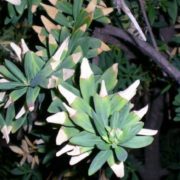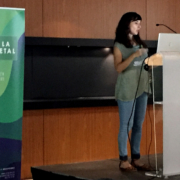Further investigations on the genetics of Xylella fastidiosa isolates spreading in Apulia
With the support of POnTE Project (WP3) and in the framework of the monitoring program ongoing in the Apulia Region, the joint research team of CNR-IPSP and UNIBA-DiSSPA implemented the dataset of sequences available for the isolates of Xylella fastidiosa detected in different hosts and foci in the affected area.
Fifteen new isolates were analyzed using the Multilocus Sequence Typing (MLST) approach. Based on the novel sequencing results, only one sequence type (namely ST53) could be identified. This data further support the previous evidence showing that a single sequence type is associated with the Xylella epidemics in the Apulia region.
The presence of the ST53 ‘CoDiRO’ strain was confirmed in the infected olive tree discovered in the northernmost Apulian outbreak (municipality of Ostuni) and in several newly reported hosts: prickly spider-flower (Grevillea juperina), pink rock-rose (Cistus creticus), buckthorn (Rhamnus alaternus), hop bush (Dodonaea viscosa), bay laurel (Laurus nobilis), mock privet (Phillyrea latifolia), English lavender (Lavandula angustifolia), French lavender (Lavandula stoeachas), native juniper (Myoporum insulare), spotted emu bush (Eremophila maculata), wild asparagus (Asparagus acutifolius), European heliotrope (Heliotropium europaeum), white goosefoot (Chenopodium album), and wavy-leaf fleabane (Erigeron bonariensis).
This novel scientific information were officially communicated to the National and Regional Plant Health Services on February 10, 2017.









